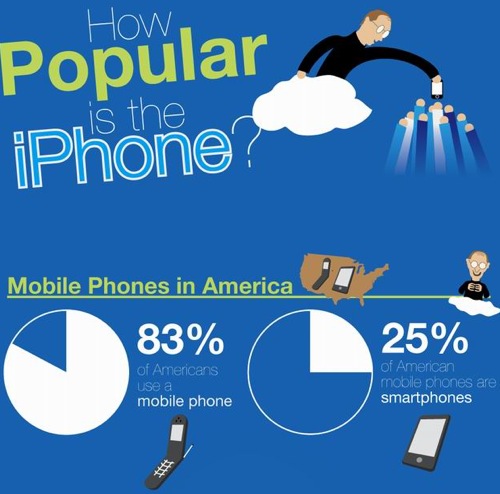Infographic: Getting a grip on the true popularity of the iPhone

Given all of the hype over the iPhone online, on TV or wherever, it sometimes seems like Apple's smartphone is the only handheld on the market. But a new infographic claims otherwise.
The graphic created by BillShrink paints a very bleak picture of where the iPhone stands in the market share when compared to BlackBerry, Android and mobile phones in general.
For example, according to the graphic, Apple only has 2% of the global mobile phone market share and 28% of the U.S. smartphone market share, right behind the BlackBerry on both counts.
Some stats are a bit skewed, such as the point the iPhone came in third in sales between October and December 2009 with 21% of the market share, behind BlackBerry and Android. Sure, it was the holiday season, but that was pre-iPhone 4. Despite all the problems with the iPhone 4, it has certainly sold well. However, HTC and Motorola are gaining a lot of ground with the Droid Incredible, Droid X, and Droid 2 (among other handhelds), so maybe Android will beat out the iPhone again this winter.
One more stat that is striking and difficult to quantify is the mind of the iPhone owner, as the graphic states that iPhone owners assume 89% of the consumer population will buy an iPhone for his or her next smartphone purchase. The same is true of BlackBerry and Android owners, but to a much lesser extent. Similar studies have been done in the past, such as the recent MyType study that found that iPad owners are "selfish elites." But you can't get in the mind of everyone, and after awhile, how much does it just sound like lame jealousy?
The image above is just a tiny excerpt, so head over to Mashable to get a good look at the entire graphic. But after a closer look, what do you think of these findings? Do you agree with them or think they should be subject to some additional scrutiny?
